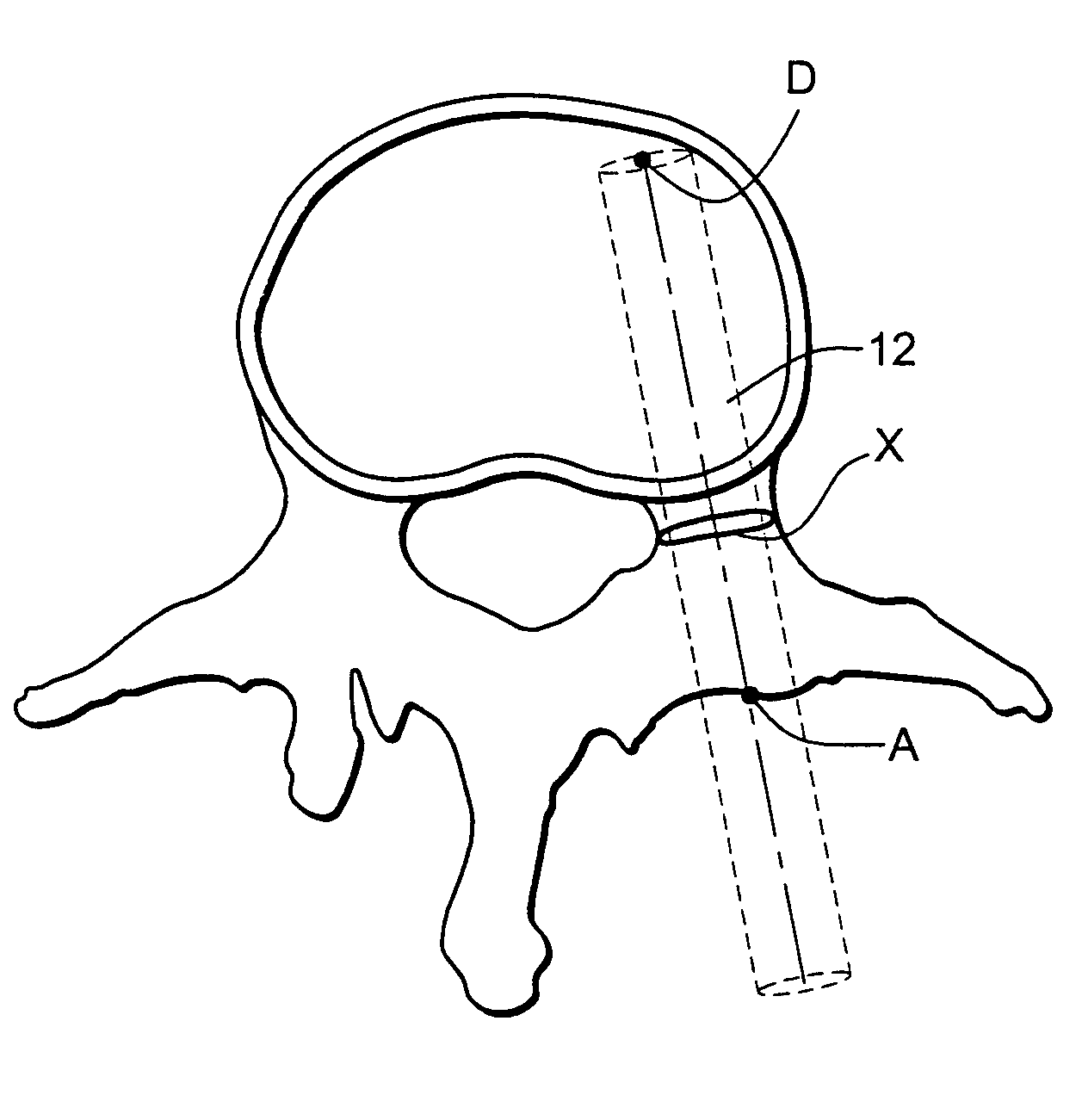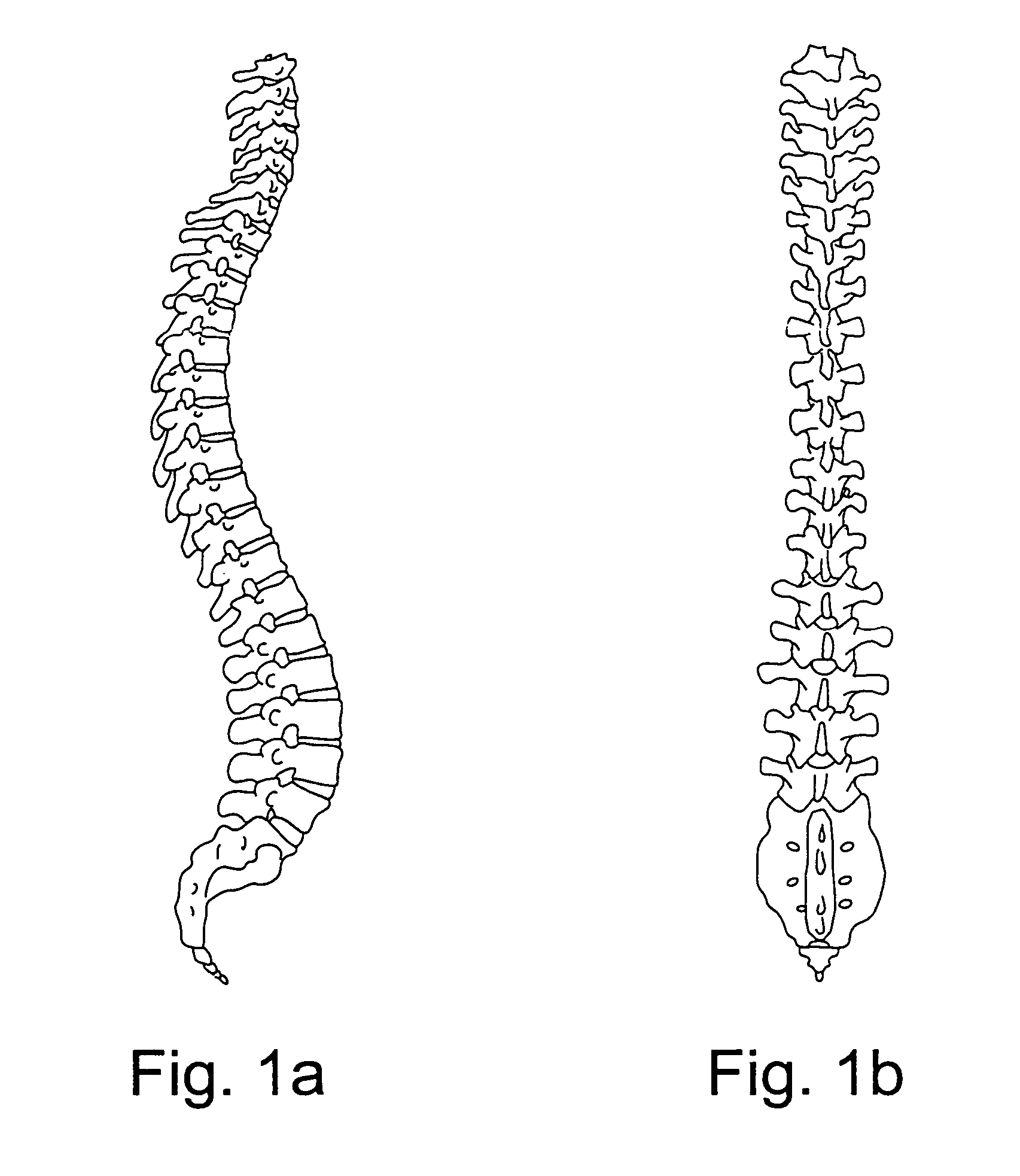Method of improving pedicle screw placement in spinal surgery
a technology of pedicle screw and spinal surgery, applied in the field of spinal surgery, can solve the problems of biomechanical inferior construction, no system available to automatically determine the ideal pedicle screw placement, and significant morbidity and/or mortality, and achieve the effect of convenient safe and reliable access
- Summary
- Abstract
- Description
- Claims
- Application Information
AI Technical Summary
Benefits of technology
Problems solved by technology
Method used
Image
Examples
Embodiment Construction
[0058]The methods of determining pedicle screw size and placement in accordance with the present invention are set forth in more detail hereinafter.
Step 1
[0059]A computed tomography scan (CT), magnetic resonance image (MRI), CT capable fluoroscopy or similar two-dimensional imaging study of the spine area of interest may first be obtained. Thin cut sections are preferable to increase accuracy and detail.
Step 2
[0060]A dimensionally true three dimensional computer image of the bony spine is made from the CT, MRI or other studies or in any other suitable manner, as shown in FIGS. 1a and 1b.
Step 3
[0061]The three dimensional individual vertebra as shown in FIG. 2 are then hollowed out by a computer, similar to an eggshell transpedicular vertebral corpectomy, to the specifications desired by the surgeon (i.e., thickness of cortical wall remaining in the vertebral body cortices or pedicle walls). These specifications allow for asymmetric thicknesses, such that, for example, anterior verte...
PUM
 Login to View More
Login to View More Abstract
Description
Claims
Application Information
 Login to View More
Login to View More - R&D
- Intellectual Property
- Life Sciences
- Materials
- Tech Scout
- Unparalleled Data Quality
- Higher Quality Content
- 60% Fewer Hallucinations
Browse by: Latest US Patents, China's latest patents, Technical Efficacy Thesaurus, Application Domain, Technology Topic, Popular Technical Reports.
© 2025 PatSnap. All rights reserved.Legal|Privacy policy|Modern Slavery Act Transparency Statement|Sitemap|About US| Contact US: help@patsnap.com



